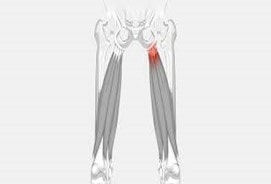|
The hamstring is one of the most important muscle groups while running. It has a variety of roles throughout the gait cycle. These include forces to control the knee as it extends thorough the swing phase and creating the hip extension in the stance phase as the body passes over the planted foot. There is no wonder that this can be such a problematic region of the body when considering injuries that a runner might suffer. With such a complex role, pain in this muscle group can be caused by various injuries along the hamstring. This article will explore some of these most commonly suffered by runners. Hamstring Tear/Strain What is it and what causes it? Muscle strains are categorised into three grades. Generally, a hamstring strain will occur in the muscle belly (in the middle of the posterior thigh) or at either end of the muscle belly in the musculotendinous junction (as the muscle blends into the tendon). The most significant of strains (grade II or grade III) are more commonly experienced in sprinters due to the explosive forces. These types of strains can also be suffered because of sudden change of direction or acceleration and deceleration. Trail or fell runners who leap, jump or frequently run hills may be more susceptible to these types of strains than the steady state road pounding miles of a distance runner. The grade III rupture is a significant injury which will stop the runner in their tracks. It is often described as a pop or crack. The runner will feel like they have been shot in the back of the leg and is likely to leave them lying on the floor in severe pain. There will be immediate bruising and swelling as the blood rushes through the torn muscle. There will be a reluctance to put weight through this leg and the runner will be unlikely to walk. This would need immediate medical attention and, in most instances, result in surgical repair. A grade II strain will present similarly to a lesser extent. Although painful the runner would likely be able to walk, and subsequent bruising and swelling may be less severe or even non-existent. The more commonly experienced hamstring strains for steady state distance runners are the low grade I strains. The principle of injury is the same. The muscle is overloaded to the point it becomes under stress enough to tear. The over loaded muscle could have been caused by fatigue with increased intensity or lack of recovery in training. The tight shortened muscle in this state can create increased tension through the fibres as the hamstring goes through the gait cycle. These forces can expose the fibres to tear. A grade I strain will cause the runner a degree of pain but perhaps something that they can continue to run through. This pain usually stops after a run leading the runner to believe there is not an injury present. There is also unlikely to be any visible bruising or swelling present. How to treat it?
How to prevent it?
Tendinopathy What is it and what causes it?
Proximal Hamstring tendinopathy is regarded as a commonly acquired injury in longer distance steady state runners. This is due to the gradual onset produced over time with a repetitive gait cycle. As previously discussed, the Hamstring muscle is under tension across two joints in the later stages of the swing phase (as the knee decelerates through extension and the hip drives into flexion). This position is thought to generate compression of the tendon at the top of the hamstring, causing irritation, inflammation, and pain. Aggravating factors may be a sharp increase in volume or intensity of running, an increase in stride length, or swift introduction to interval/fartlek training or hill running. Symptoms
0 Comments
Your comment will be posted after it is approved.
Leave a Reply. |
Taylormade
|
PERFORMANCE AND REHABILITATION CLINIC
Injury Management and Conditioning Specialist
Taylormade Rehab, 1 Belle Vue, Fenny Bridges, Honiton, Devon EX14 3BJ | 07800 824557 | 07855 386634
© 2019 Taylormade | Performance & Rehabilitation Clinic. Injury Management & Conditioning Specialists | Website design by brightblueC
© 2019 Taylormade | Performance & Rehabilitation Clinic. Injury Management & Conditioning Specialists | Website design by brightblueC




 RSS Feed
RSS Feed
